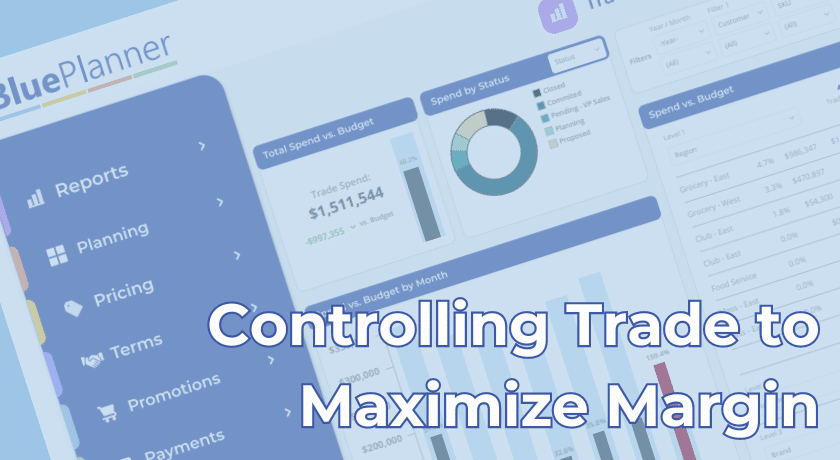

Fast moving consumer goods manufacturers operate in a highly competitive market. First, securing distribution requires slotting or free fill fees. Then, promotional activity kicks in, and this costs money. Trade spending -the money spent to promote products at distributor and retailer customers- routinely equals a dollar value of 20% or more of gross sales revenue. It is typically surpassed only by cost of goods sold as an expense to consumer goods companies. Effective management and control of this expense is critical for the business to remain healthy.
Emerging brands initially manage trade spending with spreadsheets. They can do this because there aren’t many customers or products, and relatively few promotions. But as more and more distributors and retailers pick up your products, three things happen:
The outcome of this is usually an eroding profit margin.
Consumer Goods companies hold their sales team accountable to trade spending dollars as a percent of gross revenue, but they also have to control to an absolute dollar forecast on their P&L. When spreadsheets are used, multiple sources of data (what was planned, what sold, what was spent) must be manually updated, then collated. Questions come up adding more back-and-forth and cycle time. By the time the report is assembled, the information is out-of-date.
Trade Promotions Management (TPM) is a purpose-built business system for CG manufacturers used by sales, accounting, finance, and demand planning. TPM has several features specifically designed to control trade spending. In the simplest sense, TPM is a “checkbook.” The “deposits” are the promotions, slotting activities, etc. that are planned and approved. The promotion approval process can be set up to be contingent on available money or a guardrail like dead net pricing. The “withdrawals” are check payments and deductions that get associated with the planned activities. Beyond that, you can establish trade spending targets that define spending limits for your account reps. Next, reports detailing trade spending across customers and products are maintained and always available, eliminating the need for manual construction and updating. When fully deployed, TPM combines actual spending to date with approved planned spending for the remainder of your fiscal year to report an “all-in” forecast of spending –both absolute spending and rate.
The process is transformed from using high-level, outdated information to granular customer and product metrics in dashboards that are available at any time. But beyond simply controlling spend, you build a database of actual spending across products, customers, and promotions across time. So, when the questions come, or the time comes to make difficult decisions, you’ll have information quicker and with more detail than you thought possible.
UpClear makes software used by Consumer Goods brands to improve the management of sales & trade spending. Its BluePlanner platform is an integrated solution supporting Trade Promotion Management, Trade Promotion Optimization, Integrated Business Planning, and Revenue Growth Management.


